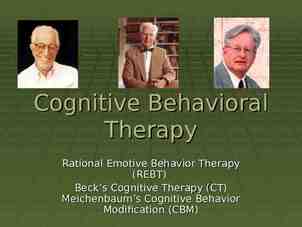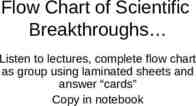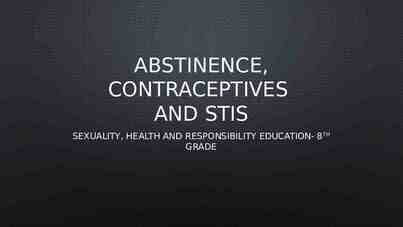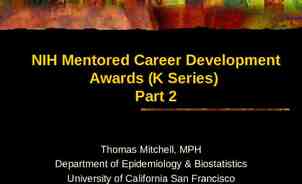Human Aspects of Estate Planning By: Martin M. Shenkman, Esq. 1
70 Slides199.99 KB

Human Aspects of Estate Planning By: Martin M. Shenkman, Esq. 1

General Disclaimer 2 The information and/or the materials provided as part of this program are intended and provided solely for informational and educational purposes. None of the information and/or materials provided as part of this power point or ancillary materials are intended to be, nor should they be construed to be, the basis of any investment, legal, tax or other professional advice. Under no circumstances should the audio, power point or other materials be considered to be, or used as, independent legal, tax, investment or other professional advice. The discussions are general in nature and not person specific. Laws vary by state and are subject to constant change. Economic developments could dramatically alter the illustrations or recommendations offered in the program or materials.

Recent Developments with Practical Estate Planning Implications to Advisers Cancer Stats 3

Cancer Stats 1 in 2 men will develop cancer in their lifetime and 1 in 4 men will die from cancer. 1 in 3 women will develop cancer in their lifetime and 1 in 5 women will die from cancer. Around 1,688,780 new cancer cases are expected to be diagnosed in 2017. 4

Recent Developments with Practical Estate Planning Implications to Advisers Agent Confusion 5

Agent Confusion - 1 6 The multitude of fiduciary and quasi-fiduciary appointments aging clients make, almost entirely without professional input, can create conflicts and inconsistencies in the administration of the client’s affairs. Practitioners should expand the scope of their inquiry to determine all such appointments, be certain that they coordinate with the fiduciaries named under primary legal documents, and that they do not undermine the safeguards the planning team is endeavoring to create. As estate planning for aging clients grows in importance it also needs to evolve in scope to address a broader range of practical, non-technical, considerations. Authorized signer on safe deposit box.

Agent Confusion - 2 7 Brokers will be required, under FINRA Rule 4512, “Customer Account Information,” to make reasonable efforts to obtain the name of and contact information for a trusted contact. Social Security's Administration (SSA) Representative Payment Program. Long term care insurance “lapse designee.” Successor Account Holders on 529 and 529A plans. Bank accounts POD, TOD, joint, etc.

Recent Developments with Practical Estate Planning Implications to Advisers Fixing Old Trusts When Clients Need More Funds 8

Fixing Old Trusts When Clients Need Funds 9 Sell discounted assets for AFR note from dynasty trust to SLAT so client can access excess cash flow. Have old trust and clients contribute assets to preferred partnership increasing annual payment to client. Decanting or non-judicial modification to change. Loan provision. Tax reimbursement – use or decant to add.

Recent Developments with Practical Estate Planning Implications to Advisers E-Signatures 10

E-Signatures Should practitioners use e-signatures to help clients have Crummey powers signed? Why would a beneficiary’s electronic signature not suffice as proof that the trustee gave that beneficiary notice of a gift? 11

Recent Developments with Practical Estate Planning Implications to Advisers Charitable Giving and Age of Donors 12

Age of Donors - 1 13 If donations in fact increase significant at older ages that might suggest several considerations that affect planning. First, budgets and forecasts based on a different level of giving may need to be updated to be accurate. Powers of attorney and revocable trusts that address gifting should be reviewed to be certain that they permit charitable gifts. Consider how language like “in accordance with my historical pattern of giving” might be interpreted if that pattern has changed? Practitioners should recognize that most donations are made by older clients. See the discussions below concerning longevity. While encouraging clients to donate is a noble endeavor, be certain that the clients have had reasonable financial forecasts completed to an appropriate age so that the donations are in fact sustainable without adversely affecting the client’s ability to sustain their lifestyle for an appropriate time period. For example, an endowment construct for sustainable charitable giving might facilitate the client maximizing donations without undermining financial security.

Age of Donors - 2 14 Incorporating a line item for gifts (whether charitable, to heirs or for additional luxury purchases) into the financial projections/Monte Carlo simulations it is suggested is a better threshold analysis for determining appropriate gifts from an economic perspective, e.g. what can be given in any year without undermining long term financial objectives. This approach could free more wealth for transfer at earlier dates than the mere tax approach. Once the economic parameters are determined, then it can be evaluated how the gift transfer should be made from a tax perspective. It may prove advantageous for many future donor/clients to begin their donations at an earlier stage of their lives. If the prospective donors are in higher income tax brackets while working, i.e., before retirement at younger ages, they might be counselled to ramp up donations then, make them to donor advised funds, and then determine which charities to allocate those donations to after retirement when perhaps, based on the statistics, they have more time to focus on philanthropic endeavors.

Age of Donors - 3 15 The statistics might indicated a significant sub-optimal donation pattern for many taxpayers concentrating donations in post-retirement years when they are in lower income tax brackets and will garner lower tax benefits from donations that might be made earlier. IRS data indicates that a disproportionate amount of charitable contributions, both in terms of the number of gifts and dollar amounts donated, are made by individuals over the age of 55. 21 percent of itemizers over the age of 65 give one-third of all gifts that were deducted. These taxpayers also made average gifts nearly twice as large as those made on average by taxpayers who itemize. Robert F. Sharpe, Jr., “Who Makes Charitable Gifts and Why?” May 18, 2017 http://www.wealthmanagement.com/high-net-worth/who-makes-charitia ble-gifts-and-why .

Recent Developments with Practical Estate Planning Implications to Advisers Asset Protection Update 16

Asset Protection: Klabacka - 1 17 In Klabacka v. Nelson, 133 Nev. Advance Opinion 24 (5/25/2017). The Nevada Supreme Court confirmed that Nevada domestic asset protection trusts (DAPTs) provided protection of trust assets from spousal support and child support claims. The Court recognized that Nevada's DAPT approach differs from Florida, South Dakota, and Wyoming, in that Nevada abandoned the interests of child- and spousal-support creditors, as well as involuntary tort creditors, to attract trust business. The Court held that breaching trust formalities of an otherwise validly created DAPT does not invalidate a spendthrift trust. Rather, it creates a cause of action for a civil suit against the trustee.

Asset Protection: Klabacka - 2 18 The Klabacka decision does not address the most worrisome DAPT issue, which is whether a resident of a non-DAPT jurisdiction, who creates a trust in a DAPT jurisdiction, such as Nevada, will have that trust respected, i.e. will achieve the hoped-for asset protection goals. What does this holding mean considering the Uniform Fraudulent Conveyances Act comment on DAPTs? Can/should clients residing in non-DAPT jurisdictions continue to use DAPTs? What should practitioners do with respect to existing DAPTs?

Asset Protection: Curci - 1 19 The court noted that ordinarily a corporation is considered a separate legal entity, distinct from its stockholders, officers and directors, with separate and distinct liabilities and obligations. The same is true of a limited liability company (LLC) and its members and managers. That distinction can be disregarded by the courts if being used to perpetrate a fraud, circumvent a statute, or accomplish some other wrongful or inequitable purpose. The distinction can also be disregarded under an alter-ego doctrine when the actions of the entity are deemed to be those of the equitable owner. The court in Cursi allowed the claimant to invade a limited liability company (LLC) owned by the debtors to use LLC assets to satisfy their claim.

Asset Protection: Curci - 2 20 Generally, a charging order is viewed as the sole remedy a claimant can get. That basically means that the claimant can lien your interest in an LLC (or partnership) and receive a distribution you would have been entitled to. The debtor in Curci behaved so badly, and he clearly controlled the LLC that was pierced. There were major mistakes in ignoring the entity formalities, and seemingly little purpose in the entity other than to shield assets from the creditor. Curci Investments, LLC v. Baldwin, Court of Appeal, Fourth Dist., Div. 3, CA G052764 Aug. 10, 2017.

Asset Protection: Leathers 21 In Leathers, the court held that a taxpayer fraudulently transferred assets to a trust to avoid tax debt. The IRS had consistently maintained that the transfer of mineral interests to a trust was fraudulent. Under Kansas law, a transfer by a debtor is fraudulent as to a creditor if the debtor makes the transfer with actual intent to hinder, delay or defraud the creditor. The direct testimony from the individual and the trustee that the purpose of the trust was to protect the transferor’s mineral interests from the IRS. The IRS tax liens took priority over any interest the trust might claim. M.R. Leathers, CA-10, 2017-1 USTC ¶50,212, May 4, 2017.

Asset Protection: Transfirst - 1 22 The debtor asserted that the only remedy against an LLC was a charging order, but the creditors argued that the entities were shams, and endeavored to pierce the LLC to reach underlying assets. The creditor similarly asserted the right to pierce a trust. The debtor claimed that such an action against a trust was inappropriate. If entities of any type, or even trusts, are used to defraud creditors, courts may well craft a means to disregard or pierce them. Optics can be important in creditor cases. When the debtor lives a lavish lifestyle while claiming no access to assets, the result will more likely be less favorable to the debtor.

Asset Protection: Transfirst - 2 23 While Transfirst is another bad-fact case, it should nonetheless serve as a reminder that clients with complex structures must meet regularly, not less frequently than annually, to review the maintenance and operation of those structures with their entire advisor team and assure they are operated with all appropriate formality. Clients with legitimate business purposes for entity and trust structures should corroborate them. This case provided yet another reminder that creating entity structures (LLC, corporation, partnership, trust) to protect assets will not succeed if the debtor himself does not respect the integrity of those entities was provided in Transfirst. The trust was held to be a mere nominee for the taxpayer and could be disregarded to satisfy a tax lien. Transfirst Group, Inc. v. Magliarditi, 2017 WL 2294288 (D. Nev., May 25, 2017).

Asset Protection: Balice - 1 The IRS successfully pierced a trust created by a taxpayer to satisfy a tax lien on the basis that the trust was a mere nominee for the taxpayer and could be disregarded. Here are some facts the court cited in determining if a trust is a mere nominee for the settlor: – – – – – – 24 Did the nominee pay adequate consideration for the property. Did the taxpayer transfer property to the name of the nominee in anticipation of a suit. Did the transferor continue to use the property. Did the transferor retain enjoyment of the benefits of the transferred property. Was there is a close relationship between transferor and the nominee. Was the transfer recorded in the case of real estate.

Asset Protection: Balice - 2 25 How different are some of the factors cite above from a well planned and implemented SLAT owning an interest in a vacation home? What is the risk of court applying a Balice to a good fact case? Balice, U.S. v. Balice, Case 2:14-cv-03937-KM-JBC, (D.N.J. 8/9/2017).

Recent Developments with Practical Estate Planning Implications to Advisers Assisted Suicide 26

Assisted Suicide - 1 27 Six states (California, Colorado, Oregon, Vermont, Washington and Montana) now permit legal suicide, either through statute or case law. What steps should be taken to permit clients who wish to avail themselves of one of these laws to do so? Practitioners may for personal, religious or other reasons choose not to counsel a client on pursuing assisted suicide, but knowledge of the topic may be important to that discussion and the referral to other advisers.

Assisted Suicide - 2 Legal suicide is when, after complying with strict procedures, a dying and suffering client may obtain prescription medication to end his or her life in a less painful manner. Common requirements of these laws may include: – – – – – – 28 Make the request personally. Be a resident of the state permitting this. This requirement is an important part of planning that those living in other states should address, and preferably as early as possible after obtaining a diagnosis of the terminal condition. Diagnosed to have a terminal illness with a prognosis of six months or less to live. The dire health status must be confirmed by two physicians, including the client’s primary physician and a second, consulting physician. Confirmed as being mentally capable to make this decision by two physicians. They must specifically conclude that the client understands the consequences of the decision. Confirmation that the decision is deliberate.

Assisted Suicide - 3 29 To avail themselves of this option clients need to relocate to, and become a resident of, the states permitting this, with sufficient time and capacity to meet the strict statutory requirements. Be certain that the client understands and considers that this option may violate religious beliefs of the faith the client has adhered to. It may also deeply offend and upset family and friends. Encourage the client to discuss the entire matter with any religious advisers, mental health professional and others.

Recent Developments with Practical Estate Planning Implications to Advisers Divorce Decanting – Ferri Case 30

Divorce Decanting: Ferri Case - 1 31 Ferri v. Powell-Ferri, 476 Mass. 651 (2017). The court permitted decanting to safeguard assets in a poorly crafted trust or traditional style trust. The issue that arises in many states of the “veil of impropriety” from taking action just prior to a divorce did not deter the Ferri court. The key time events in Ferri included: 1983 - Creation of a trust for child/beneficiary; 1995 - Child/beneficiary’s marriage; 2010 Child/beneficiary’s divorce; 2011 – Decanting of trust. In Ferri, The trustee had the discretion whether or not to pay trust assets to the child/beneficiary or to instead set them aside for the child/beneficiary. In addition, the child/beneficiary could demand increasing percentages of trust corpus at specified ages beginning with 25% of corpus at age 35 and increasing in increments to 100% of trust corpus after age 47.

Divorce Decanting: Ferri Case - 2 32 The child/beneficiary’s spouse filed for divorce in October 2010. At that time, the child/beneficiary had the right to demand 75% of the corpus of the trust. This made the trustees concerned that the child/beneficiary’s ex-spouse might reach trust corpus. To endeavor to reduce this risk, the trustees decanted the trust assets into a newly created trust. While the decanting was in process the child/beneficiary’s right to withdraw principal blossomed to 100% of corpus. The new trust, as would be anticipated, eliminated the child/beneficiary’s right to demand trust corpus at specified ages. The new trust was formed in Massachusetts. While the Court determined that there is no specific decanting power under Massachusetts law, the trustee’s power to decant depends on the governing instrument and the facts. The rationale justifying decanting in the instant case was based on the fact that since the trustees had the discretion to distribute trust property to or for the benefit of the beneficiary, the power of the trustee to distribute the property to another trust for the benefit of the same beneficiary should be subsumed under the broader distribution power Morse v. Kraft, 466 Mass. 92 (2013). The Connecticut Supreme Court held that the trust assets, while outside of the reach of divorcing spouse for property settlement purposes, they would be considered for the determination of alimony.

Divorce Decanting: Ferri Case - 3 33 Consider whether the same result would have been realized if the child/beneficiary had requested the trustees decant, or were actually involved in the process (e.g., by consent to a non-judicial modification of the trust as discussed elsewhere in this outline). The decanting was done without the consent or involvement of the child/beneficiary. How would Ferri have been decided had a single email from child/divorcing husband to the trustee been found? This could make the success of the decanting in similar situations very fact sensitive as to the child/beneficiary’s involvement.

Divorce Decanting: Ferri Case - 4 34 Clients need to be educated that traditional or historic trust drafting commonly relied on techniques and provisions that are less than optimal, such as mandatory income distributions, mandatory principal distributions as specified ages, or as in the Ferri case permissible withdrawal rights of trust principal. To many clients assume erroneously that an irrevocable trust is inviolate and that with tax laws in flux no planning is necessary. Modifying old now inefficient trusts can be about much more than tax planning considerations as the Ferri case illustrates. Practitioners should encourage all clients with existing irrevocable trusts to meet to review those trusts. Whether for divorce, tax planning (whatever the future law changes provide), general asset protection planning or other reasons, modifying those old trusts through decanting might make improvements, or as in the Ferri case, save the trust assets.

Recent Developments with Practical Estate Planning Implications to Advisers LLCs and FLPs: Updating Entity Documents 35

Reconsider Tax Distribution Clause 36 While much attention has been given to tax reimbursement clauses in irrevocable trusts, practitioners should give new consideration to tax distribution clauses that might be included in the governing instruments of flow through entities. Review all family partnership, operating and S corporation shareholder, agreements. Depending on the circumstances, determine whether adding, or removing, a tax reimbursement clause should be addressed, added or modified, in light of changes in the estate tax laws and perhaps other circumstances.

Clients Need Governing Documents Not Default Statute 37 Clients, especially family members or close partners, often view the formalities of a written agreement as a waste of money, after all, they all “get along.” Well, all partners get along, until they do not. A New York case highlights the dangers of clients ignoring the importance of a thought out written governing document. This case is a good reminder to clients that the formalities are well worthwhile. As the focus on estate planning for many client wanes, assuring that clients have requisite governing documents for entities should be given more attention by practitioners. Three members formed a LLC and initially operated without a written operating agreement, which meant state law default rules applied. Two of the three members, a majority, adopted a new written operating agreement that provided for capital calls. A capital call was made and the third member who did not sign the agreement, did not contribute additional capital as required, and his interests in the LLC were reduced.

Clients Need Governing Documents Not Default Statute 38 That third non-contributing member argued that the operating agreement was invalid because it was adopted by less than all members. However, New York Limited Liability Company Law Sec. 402(c) provides that the operating agreement may be adopted by "the vote of a majority in interest of the members entitled to vote thereon." The non-contributing member argued that there was an oral agreement but the law contemplated only a written agreement, and if that written agreement does not address a particular rule, state default rules apply. Limited Liability Company Law Sec. 417 requires a written operating agreement, and where there is no operating agreement, or the operating agreement fails to address issues in dispute, the default provisions under the Limited Liability Company Law govern. Since the written operating agreement specified that a member's interest may be reduced proportionally if the member fails to make a requested additional capital contribution, the non-contributing member’s interests could be reduced.

Recent Developments with Practical Estate Planning Implications to Advisers Practice Management: Email Communications 39

Practice Management: Email Communications - 1 Ethics 40 Opinion 477 updates Ethics Opinion 99- 413. New opinion 477 addresses the now common use of technology such as tablet devices, smartphones, and cloud storage. Practitioners should evaluate modifying their retainer agreements, and other client communications and documentation, to reflect how they are addressing these issues.

Practice Management: Email Communications - 2 41 Each device and each storage location offer an opportunity for the inadvertent or unauthorized disclosure of information relating to the representation, and thus implicate a lawyer’s ethical duties under Rule 1.1 of the ABA Model Rules concerning competency, confidentiality, and communication. Lawyers must take reasonable efforts to ensure that communications with clients are secure and not subject to inadvertent or unauthorized security breaches. Attorneys must use “reasonable efforts” to ensure the security of client information. This is a “facts and circumstances” test. What is “reasonable?” Comment 8 to the rule requires lawyers to be current regarding the benefits and risks associated with relevant technology. What steps should estate planning attorneys take to become current and to demonstrate that they are current?

Practice Management: Email Communications - 3 What constitutes reasonable efforts is not susceptible to a hard and fast rule, but rather is contingent upon a set of factors. In turn, those factors depend on the multitude of possible types of information being communicated (ranging along a spectrum from highly sensitive information to insignificant), the methods of electronic communications employed, and the types of available security measures for each method. Attorneys must use “reasonable efforts” to ensure the security of client information. Consider: – – – – – 42 Sensitivity of the information being transmitted. Risk of disclosure if additional security measures are not taken. Cost of additional measures. The difficulty of adding additional safeguards. Might additional safeguards adversely impact the lawyer’s ability to represent the client.

Practice Management: Email Communications - 4 43 While the recent Ethics Opinion points out a number of issues, the details of what steps should be taken, how retainer agreements should be revised, what specific software should be used and precautions taken, etc. need to be addressed. Are you using secure email for documents? For documents with tax ID numbers? Not at all? The continued evolution of the technological environment in which estate planning attorneys practice remains a challenge. Inaction, however, is not an option.

Practice Management: Email Communications - 5 44 Sample Provision: Consider including provisions in retainer agreements to address these matters: “Email and cellular telephone communications present special risks of inadvertent disclosure. However, because of the countervailing speed, efficiency, and convenience of these methods of communication, we have adopted them as part of the normal course of our operations. You consent to our use of Email and cellular telephone communications in representing you. Please do not assume we have received any text message unless you verbally confirm that we have.”

Recent Developments with Practical Estate Planning Implications to Advisers Probate: Inheritance Right Interference 45

Probate: Inheritance Right Interference - 1 46 Kinsel v. Lindsey, NO. 15-0403, Texas Supreme, Court May 26, 2017. In Kinsel the Texas Supreme Court refused to recognize a cause of action for “tortious interference with an inheritance” but may have left the door open for such an action if a future case with different facts. The case discusses undue influence and other issues that practitioners are likely to see with increasing frequency as the population ages. Lesey Kinsel (Grandmother) owned 60% of the ranch, and her stepchildren and step-grandchildren owned various shares of the other 40%. Grandmother deeded her share of the ranch to her inter-vivos trust in 1996. Under the trust’s terms, her 60% interest in the surface and minerals would pass to certain step-children and step-grandchildren, some of whom already owned interests in the ranch. The ranch in question was sold a mere month before Grandmother died thereby changing the beneficiary of the value involved.

Probate: Inheritance Right Interference - 2 47 Her estate-planning documents were silent as to what would happen if the ranch were sold during her lifetime. So by default, any ranch-sale proceeds would pass to the trust’s residual beneficiary—Lesey’s only niece, Jane Lindsey. The beneficiaries who stood to inherit the ranch argued they were misled to believe Lesey was running out of money and needed to liquidate the ranch to cover the growing costs of her care. In reality, Lesey had around 1.4 million in marketable securities at her disposal. The beneficiaries who owned shares in the ranch argued they would not have agreed to sell if they did not believe it necessary to support Lesey. The court weighed benefits in the facts at hand to finding a cause of action for the tortious interference with an inheritance right versus the negatives of enlarging the body of Texas tort law and determined that they should not do so. The court stated that the law provided an adequate remedy in this case, the beneficiaries simply were unsuccessful in fully attaining it. Thus, the court appears to have left open the possibility of recognizing a cause of action for interference with inheritance rights if the remedy under other available causes of actions were not adequate.

Probate: Inheritance Right Interference - 3 Many questions: It is curious that the possible gap in the planning and documents did not receive more attention. Counsel should endeavor to stress-test dispositive schemes to identify what actions might alter the plan or undermine the testator’s objectives. Perhaps the revocable trust dispositive provisions could have been more carefully crafted to have addressed this result. If Lesey needed funds and the sale of the ranch would have materially affected the dispositive results, perhaps a loan against the ranch may have funded lifestyle expenses (had that really been necessary) while preserving the dispositive scheme. 48

Recent Developments with Practical Estate Planning Implications to Advisers Trust Protector and Revocable Trusts 49

Trust Protector and Revocable Trusts UTC views revocable trusts as a will substitute so remainder beneficiaries have no standing to sue or demand an accounting. With aging client make revocable trusts more robust by incorporating a trust protector to act in a fiduciary capacity to replace the trustee and take protective actions. 50

Recent Developments with Practical Estate Planning Implications to Advisers Repurpose Old Irrevocable Trust Into ILIT 51

Repurpose Old Irrevocable Trust Into ILIT - 1 52 Many old irrevocable trusts have significant assets but were not designed to hold life insurance. Modify existing irrevocable trust so that it can hold life insurance (and if there is an existing ILIT decanting or merging it into the modified irrevocable trust). Permits redeployment of dollars in old irrevocable trust to insurance premiums, simplifying the client’s planning by eliminating extraneous trusts, and improving their overall planning by modernizing the old trust in the process. Impediment - old irrevocable trust does not have a person who can serve as trustee for the life insurance. The trust might have named the spouse as a trustee without a separate insurance trustee provision and the spouse cannot have powers of life insurance on her life without creating estate inclusion issues. The trust might have named an institutional trustee who will not approve the insurance the clients wish.

Repurpose Old Irrevocable Trust Into ILIT - 2 53 How can this transformation be accomplished? While some modern trusts are so flexible that they by their terms might permit a host of modifications (e.g., trust protector action), few older trusts are so malleable. The old irrevocable trust could be decanted into a new trust, or perhaps a nonjudicial modification of the old trust might achieve the desired result. Delaware has a particularly robust, although relatively new, statute governing non-judicial modification. The gist of either approach would be to modify the terms of the old irrevocable trust to add insurance provisions and in many cases to bifurcate the trustee role, or perhaps more specifically the investment trustee or advisor role, into a general investment adviser position and a separate insurance adviser or trustee provision naming someone independent to serve in the latter capacity. This bifurcation may permit the client to continue to serve as the investment trustee of her trust determining which family business interests to retain, but a new independent person who would not be insured by the trust, would hold all insurance related powers.

Recent Developments with Practical Estate Planning Implications to Advisers Definition of Estate Planning 54

Definition of Estate Planning 55 Robert Laura: “ as we seek to do what’s in our clients’ best interests, we need to begin to examine more than asset allocation, income needs, and behavioral finance and references to comprehensive or holistic planning need to include aspects of longevity and healthy aging as we embrace the notion that happiness and well-being in retirement are dictated by things such as relationships, mobility and brain functionality, not just dollars ” Charlie Douglas: According to a recent WealthCounsel survey, threefourths of Americans are confused regarding their thoughts about estate planning. This lack of clarity around estate planning helps explain the lack of public engagement, where 64 percent of Americans don’t even have a will. “Estate planning” is a multidisciplinary process where planning professionals are collaboratively engaged in protecting, preserving and enhancing the family through the accumulation, conservation and distribution of one’s assets and values.

Definition of Estate Planning 56 Steve Leimberg’s definition: “The process of accumulating, conserving, and distributing an estate in the manner that most efficiently and effectively accomplishes the client's objectives and that person's beneficiaries' needs and circumstances.” Bob Esperti and Reno Peterson (provided by Dave Holaday): “Estate planning is the process of controlling and protecting your assets during your life and passing your assets to whom you want, when you want and the way you want while minimizing taxes and expenses.”

Health Challenges Affect Planning Human Aspects of Estate Planning 57

Health Issues Affect Estate Planning: More Common than Realized 58 5 million Americans are living with Alzheimer's disease 24 million Americans are living with COPD 400,000 are living with Multiple Sclerosis Parkinson's disease affects 1% of those over age 65 120 million Americans live with some type of chronic illness. 22% of the population is estimated to be living with two or more different chronic illnesses

Health Issues Affect Estate Planning: The Home 59 It is common for those living with chronic illness to have to expend considerable sums to make their home or apartment accessible. The home become altered to remain accessible, but it also takes on an even more significant emotional role as a safe haven as illness progresses. Powers of attorney with standard provisions authorizing sale of real estate, as well as trusts with similar provisions concerning residential property, may all need to be tailored

Health Issues Affect Estate Planning: Disability and Related Triggers 60 How determine when a fiduciary should take over the management of client matters The mere transition to a successor fiduciary is not necessarily the appropriate paradigm for many chronic illnesses, and may in fact not achieve the client's goals Many disability provisions presume that once a client is disabled they will remain disabled. This is not always true. Consider – removing as co-trustee only if disabled for at least 30 days

Health Issues Affect Estate Planning: Compensation of the agents and Fiduciaries Tailored to address the unique demands the client's illness will likely create for the agents Compensation could also provide an important motivator for the agents to act, even though they are close friends or family who would, presumably, act without compensation 61

Religious Beliefs/Feelings Affect Planning Human Aspects of Estate Planning 62

Religious Affiliations and Beliefs Affect Estate Planning - Introduction 63 95 percent of Americans believe in God or some type of higher power For some, spirituality may be a vital part of their lives, but not include a belief in God No area of the law is more fraught with religious issues than estate planning Estate Planning should not be just about the transmission of wealth. Estate planning should be about the transmission of values -- this encompasses the transmission of religious beliefs With a modicum of effort, every legal document and transaction can be reconciled with your religious views

Religious Affiliations and Beliefs Affect Estate Planning – General Planning 64 Even if you're personally indifferent, ignoring religious issues can lead to family strife If you're not religious or have determined that you do not want the traditions of a particular faith adhered to, then make that point clear in your documents to avoid incorrect assumptions by family and others The level of diversity of religious affiliation and observance among family members can be substantial

Religious Affiliations and Beliefs Affect Estate Planning – Living Wills 65 Medical decision making concerning a mother and her fetus vary greatly among different religions Many patients and health care providers view the alleviation of all pain to be an essential and ideal objective. For an Orthodox Christian suffering can be an experience providing for purification, redemption, and salvation. While suffering is clearly not encouraged, pain relief to the point of making someone unconscious during their last days may prevent them from addressing profound and moving observances According to Buddhist tradition, the level of consciousness near death directly correlates to the level of rebirth Most religions provide for post death rituals and law. Under Jewish law autopsies and embalming are generally prohibited

Religious Affiliations and Beliefs Affect Estate Planning – Distributions 66 Agents and fiduciaries should be given guidance, and granted legal authority, to disburse funds for religious education (e.g. supplemental religious education or private school), religious travel (pilgrimages to holy sites), charitable giving (to inculcate a core religious value in heirs), and other purposes consistent with your religious goals. Reflect the Baha'i, Jewish, Islamic, or other religious laws of inheritance Christian Orthodox - if you do not provide for your family and relatives, it is as if you have disowned the faith, and you are worse than a non-believer Catholics -- general guidelines of charity and justice are vital

Religious Affiliations and Beliefs Affect Estate Planning – Charitable Giving 67 Every religion advocates the virtues of charity, but charitable giving can be tailored to reflect the unique nuances of your faith Baha'is are expected to give a certain percentage of their income and assets to Baha'i charitable organizations Other religions mandate tithing a certain percentage of income or assets to charity

Conclusion and Additional Information Conclusion 68

Conclusion While many are focused on the repeal issue that would obviously have a profound impact on estate planning there are numerous nontax planning considerations that practitioners must be aware of. This presentation has reviewed only a few of them. 69

Additional information Contact Martin M. Shenkman via email at [email protected] 70






